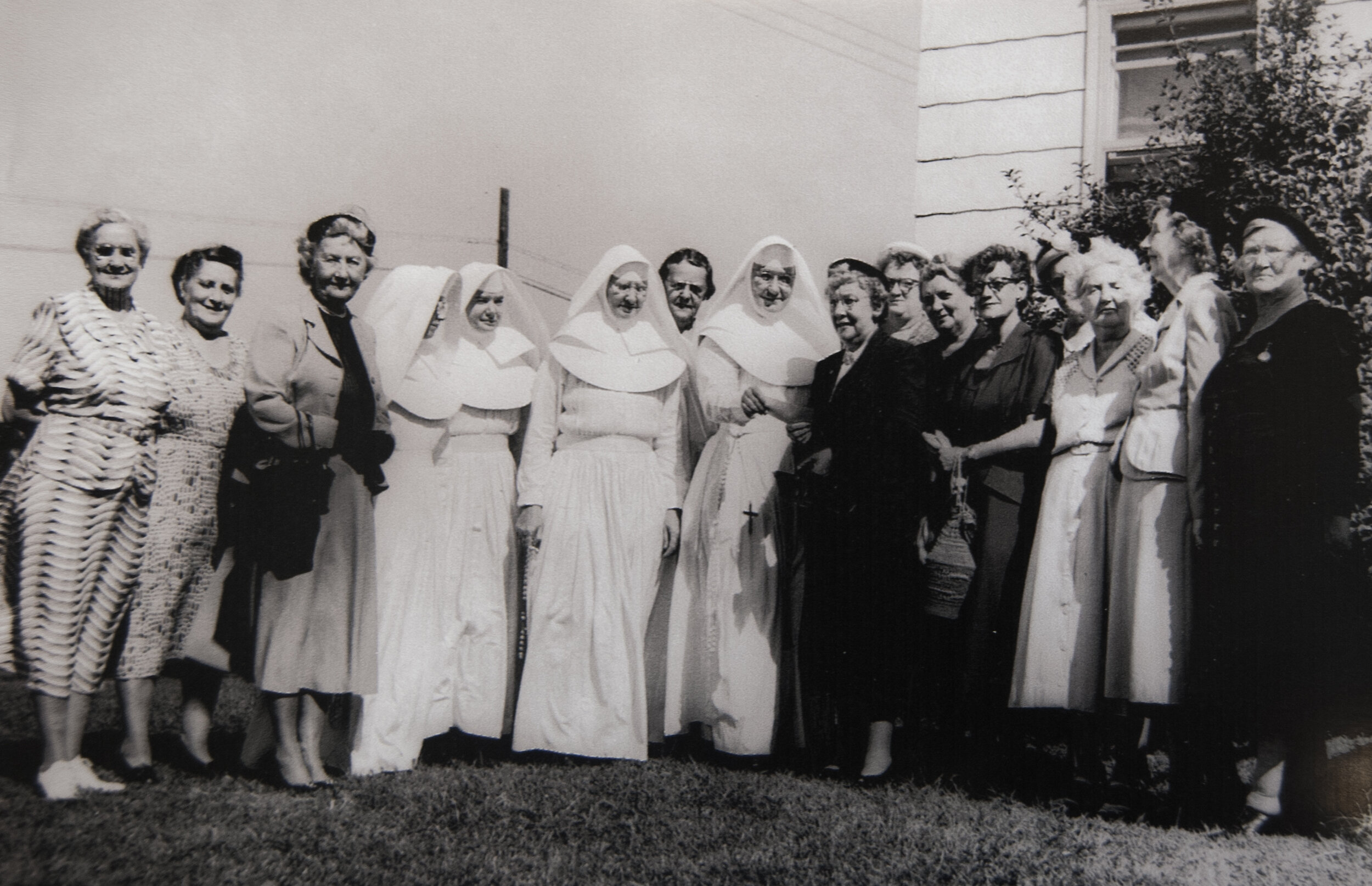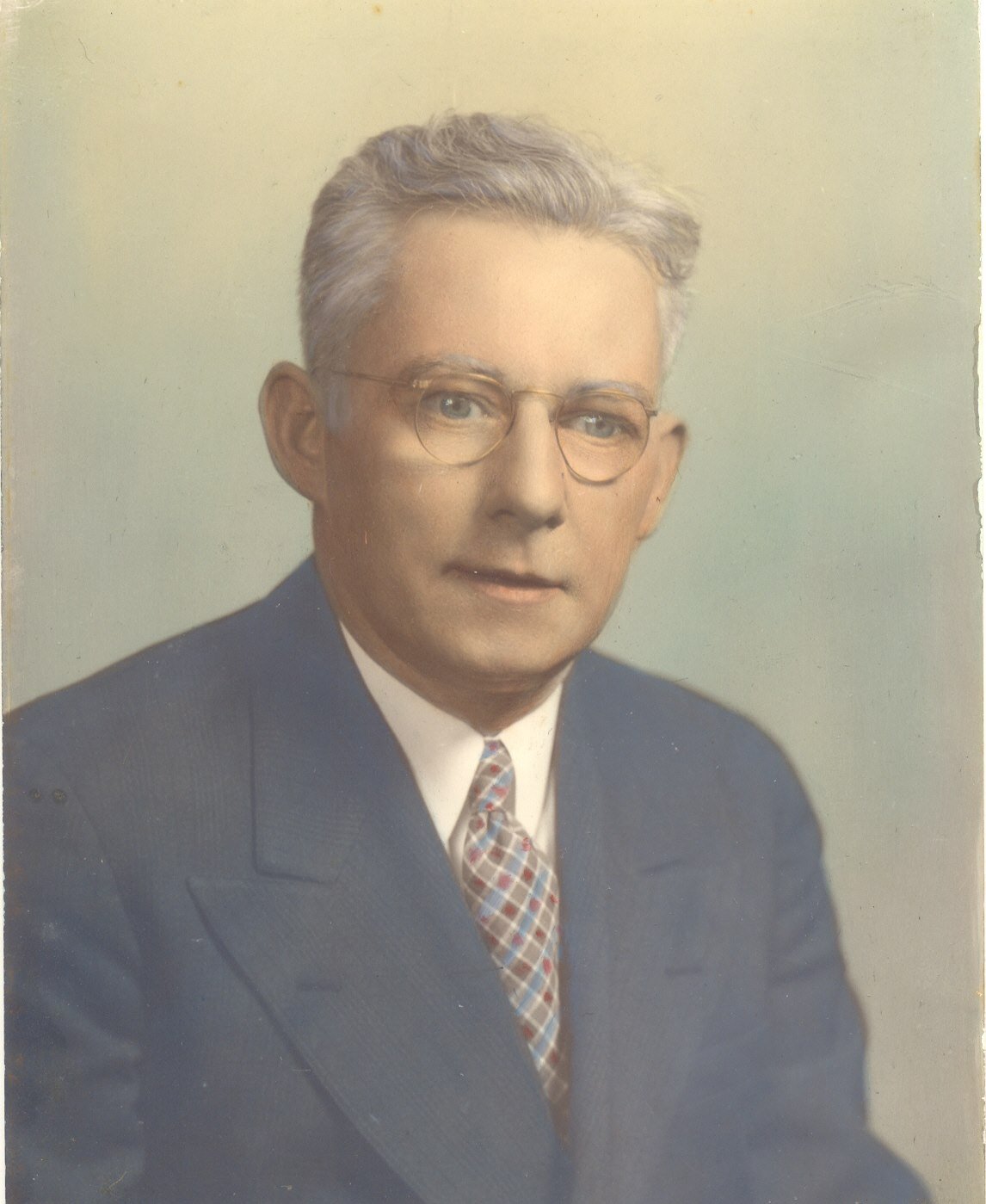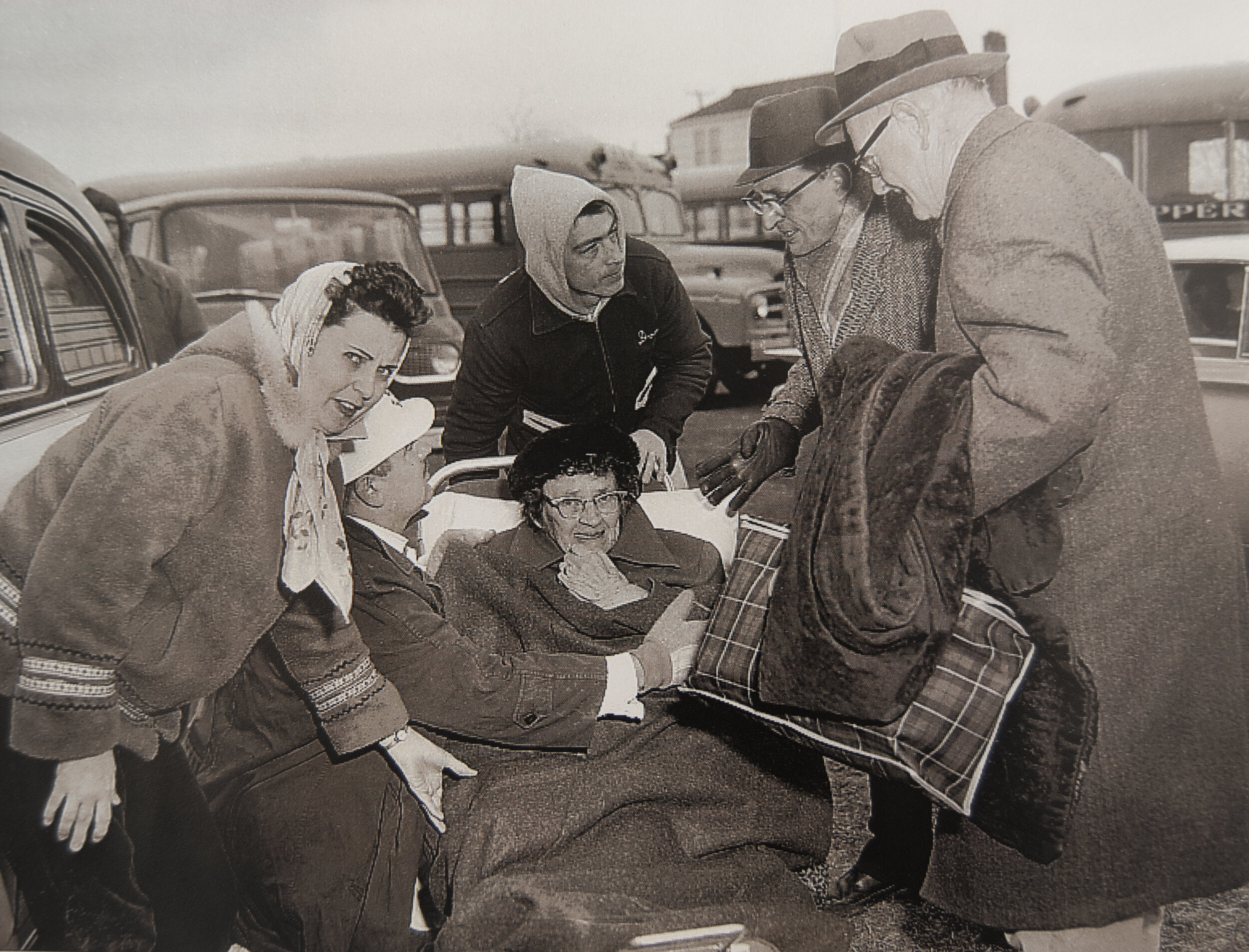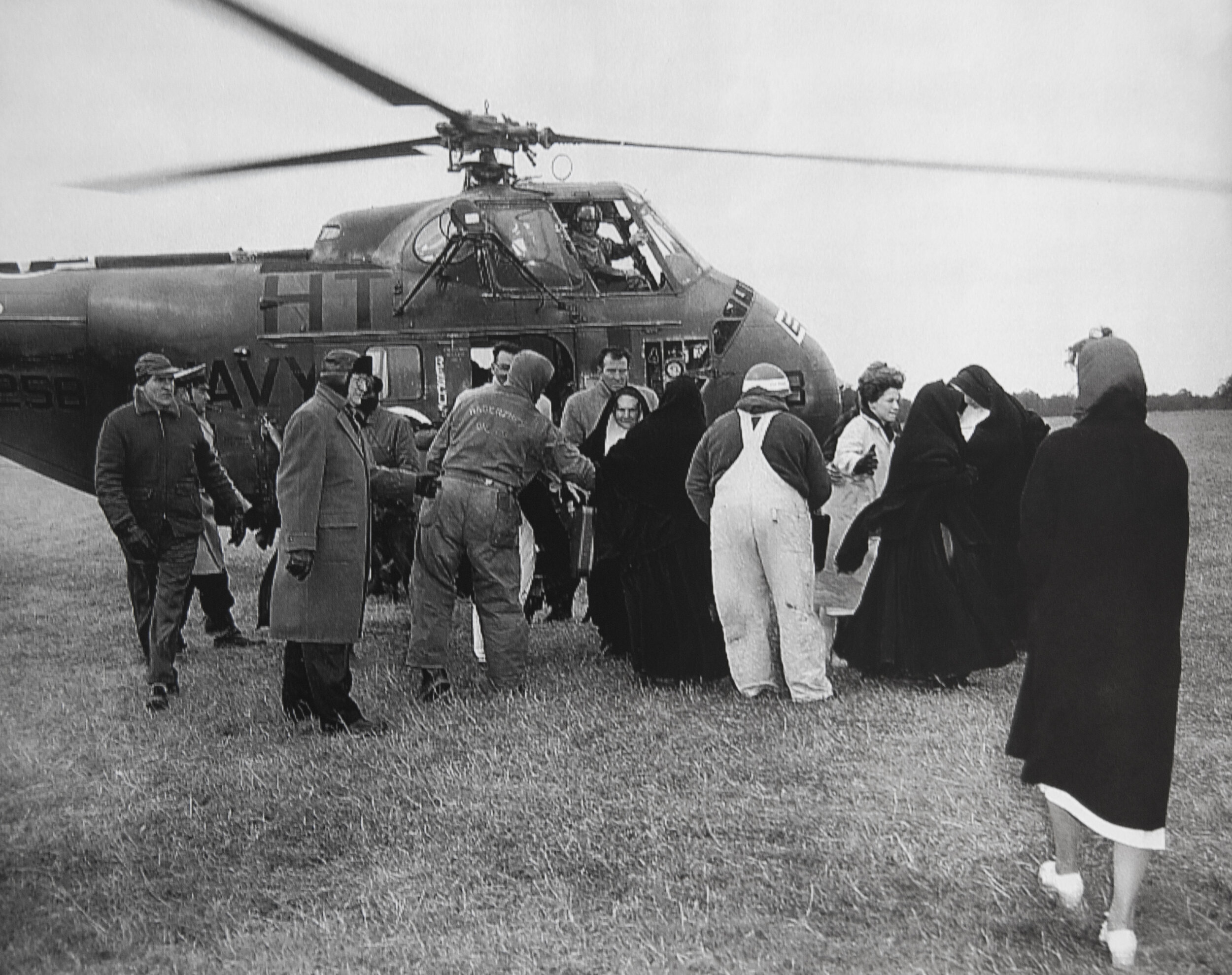When Sea Isle Had Hospitals
Mercy Hospital, circa 1950s.
When a baby was born in a Sea Isle City residence earlier this year, it was heralded as a rare event, as the last birth in Sea Isle happened more than 40 years ago. Yet at one point in time, it was nearly a routine occurrence.
It might come as a surprise to vacationers who flock to Sea Isle every summer, but the beach town was actually home to two hospitals during its history – the Sea Isle City Hospital, which opened in 1926, and the Surf Hospital, later named Mercy Hospital, which opened in 1946 and closed in 1969. They provided care not only to those in Sea Isle, but neighboring areas, too.
The formal name of Sea Isle’s first hospital was the Sea Isle City Hospital and Training School. It was established through the efforts of Claude Van Hook, who later became Sea Isle’s mayor.
Located at 48th Street and Pleasure Avenue, the hospital was formerly the Ealthare Sanitarium for sub-normal children, and before that the Shelbourne Hotel. While the new hospital provided the usual emergency and urgent care, it also retained some of its former specialties, such as “tending to convalescents, victims of nervous diseases, and backward children,” wrote Michael Stafford in his book, “Images of America: Sea Isle City.”
Patients were received at Sea Isle City Hospital from all parts of the county, with many of them charity cases. It was reported that 14 babies were born there in 1926-27. Later, it would be known as Van Hook Hospital.
The Cape May County Times heralded the hospital’s 1926 opening: “Sea Isle City Hospital, the newest institution added to Cape May County and supplying a great need to the county – a hospital for general and emergency services – is now fully equipped to render much needed service in the section of the county in which it is located. The hospital has a state license and has received appropriations from the county and Sea Isle City.”
Dr. Eugene Way and his son, Dr. Clarence W. Way of Sea Isle, were listed as attending physicians. Mrs. Lillian Sudderth, a nurse who was described as “an expert pathologist,” was in charge of the new hospital.
The father-and-son Ways eventually became the most prominent physicians in Sea Isle, according to Bob Thibault of the Sea Isle City Historical Museum. Eugene Way, who gave 57 years of service to the citizens of Cape May County by the time he retired in 1936, was known as the “beloved country doctor” and traveled across the county to tend to people who needed medical attention. He had an office in Dennisville and opened one in Sea Isle late in the first decade of the 1900s.
Clarence Way lived in Sea Isle beginning in 1913, and earned the position as the town’s official doctor, school doctor, and the “go-to doctor to treat beach casualties at the Women’s Civic Club on the boardwalk,” according to Thibault. Clarence was also the first president of the Sea Isle Rotary Club.
As for the Sea Isle City Hospital, the Cape May County Times noted on May 20, 1927 that the building’s recent renovation was “marvelous,” stating it had been repainted, a sun parlor and a roof garden added, and arrangements made for “outdoor sleeping, with the building surrounded by beautiful shrubbery.”
The hospital had 26 rooms and one ward, with no two rooms being alike. They “remind one of bedrooms in luxurious homes rather than those of an institution, so prettily and modern are the arrangements and equipment,” the Times noted.





In the same article, it was mentioned that another nurse had been added to the staff: World War I veteran Helen L. Rowe, who had “considerable experience in general and surgical practice.” In 1917, she volunteered for service in the Red Cross and went overseas with the 102nd Regulars.
“Miss Rowe had 13 months experience on the battlefields of France, serving in different sections with troops of the Allies,” the article stated. “She was wounded three times on the field of battle. As the result of her wounds her left side is seared, and due to one of her limbs being crushed by shrapnel, she walks with a slight limp.”
After the Sea Isle City Hospital closed, Dr. Frank Dealy built the 33-bed Surf Hospital, which opened in 1946 on Landis Avenue from 58th to 59th streets. It was a white, square, one-story building.
Dealy, a Philadelphia native and graduate of the Philadelphia College of Osteopathy, moved to Sea Isle City and lived at 49th Street and Pleasure Avenue, not far from the old Sea Isle City Hospital. He also had an office on 43rd Street.
Because of ill health, Dealy sold Surf Hospital to the Sisters of Mercy in 1953, and they renamed it Mercy Hospital. Dealy died March 31, 1957 in Osteopathic Hospital in Philadelphia at age 51, but he is forever remembered in Sea Isle City for his service to the community. The athletic field at 59th to 63rd streets is named in his honor.
At Mercy Hospital, Dr. Francis Hauck was an attending physician. In 1956, Hauck joined William Haffert and Howard J. Wright in signing a $6,000 loan to allow the new Sea Isle Volunteer Ambulance Corps to purchase its first ambulance.
Mercy Hospital was only open 16 years under the Mercy nuns. In late September 1969, it was announced by Sister M. Adrian that the facility would be closing Oct. 15. The hospital had a workforce of 50 employees.
“It is with deep regret that we are forced to phase out Mercy Hospital. Our decision was reached only after long and careful consideration of the needs of the community, our obligations to our employees and the rising costs of quality health care,” Sister M. Adrian stated in a press release. “We are offering employment at the Fitzgerald Mercy and Misericordia Divisions of the Mercy Catholic Medical Center in Philadelphia to those who would like to relocate in that area. We hope to be able to place all of our employees in new positions prior to the hospital’s closing.”
When Mercy Hospital closed, it brought the curtain down on Sea Isle’s short but memorable period of health care to its residents and vacationers. Cape Regional Medical Center in Cape May Court House now handles the needs of the shore community.

